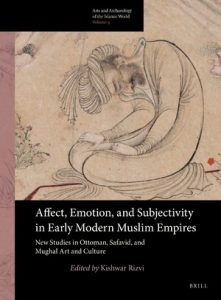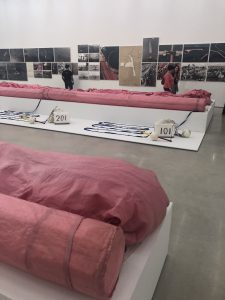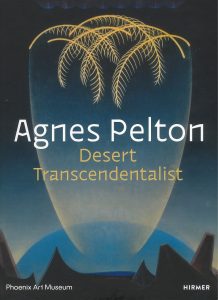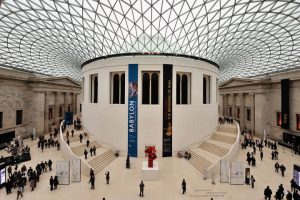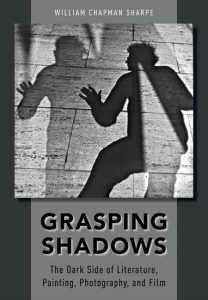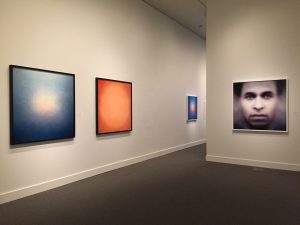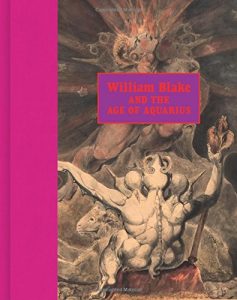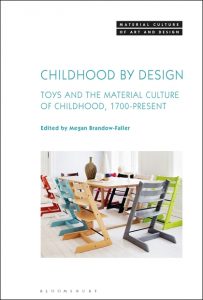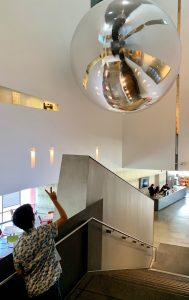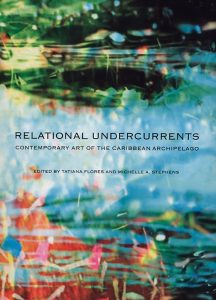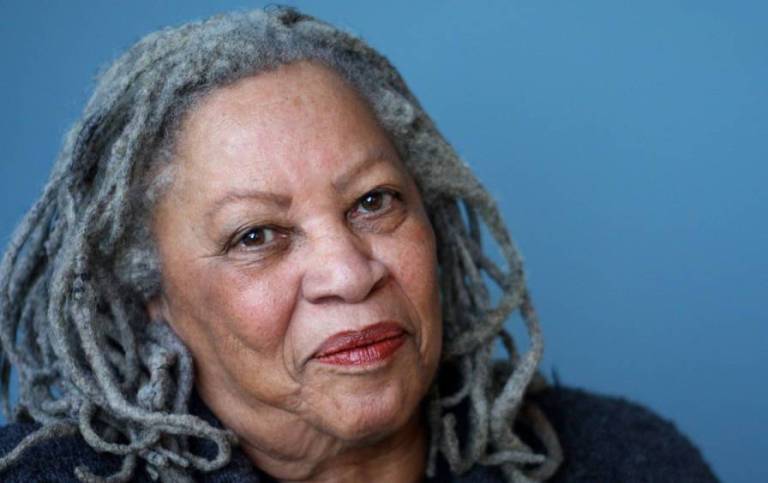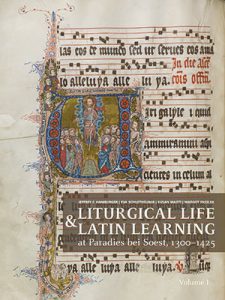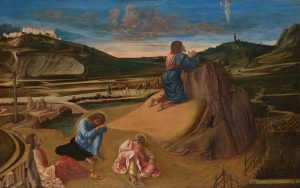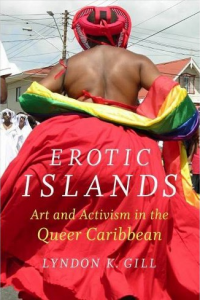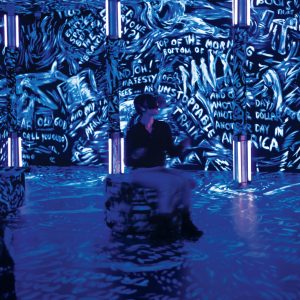CAA News Today
New in caa.reviews
posted by CAA — August 30, 2019
Peyvand Firouzeh discusses the book Affect, Emotion, and Subjectivity in Early Modern Muslim Empires: New Studies in Ottoman, Safavid, and Mughal Art and Culture, edited by Kishwar Rizvi. Read the full review at caa.reviews.
Fredo Rivera writes about Christo and Jeanne-Claude: Surrounded Islands, Biscayne Bay, Greater Miami, Florida, 1980–83 | A Documentary Exhibition at Pérez Art Museum Miami. Read the full review at caa.reviews.
Paul Eli Ivey reviews the Phoenix Art Museum exhibition and catalog Agnes Pelton: Desert Transcendentalist, along with the accompanying exhibition Transcendent Transcendentalists. Read the full review at caa.reviews.
International Review: Vibrancy In Stone: Masterpieces of the Đà Nẵng Museum of Cham Sculpture
posted by CAA — August 29, 2019
The following article was written in response to a call for submissions by CAA’s International Committee. It is by Swati Chembakur, an architectural historian at Jnanapravaha, a center for the arts in Mumbai, India. The author is also a 2019 alumna of the CAA-Getty International Program.

Vibrancy in Stone: Masterpieces of the Đà Nẵng Museum of Cham Sculpture, by Trần Kỳ Phương, V. Văn Thắng, and Peter D. Sharrock. Photographs by Paisarn Piemmettawat (Bangkok: River Books, 2018)
In 2018, the University of London’s School of Oriental and African Studies (SOAS) partnered with the Đà Nẵng Museum of Cham Sculpture in central Vietnam to produce a remarkable and visually striking centenary catalogue of its world-renowned collection of the sacred arts of the Cham people of Vietnam. The publication of Vibrancy in Stone: Masterpieces of the Đà Nẵng Museum of Cham Sculpture was timed to coincide with the renovation and expansion of the museum.
Beginning in the second century CE, settlements appeared along the central coast of what became Vietnam. The Chams probably migrated over the ocean from Borneo and were accomplished navigators. Their ports were the first call for any ship heading from China to India and the Arab world. Their role in the medieval maritime trade grew steadily and reached an apogee in the fourteenth and fifteenth centuries, when the great neighboring empire of Cambodia declined. The prosperity won from trade led to large scale temple construction earlier than the Cambodians.

Figure 1. Map of Cham archaeological sites in Vietnam
When tourism resumed in Vietnam after the wars of the twentieth century, the museum quickly became a prime attraction in the port city of Đà Nẵng. It is the world’s only museum devoted exclusively to the art of ancient Champa, the name given to the civilization of the Cham people. With 500 objects on display, its collection far outnumbers those in the Hanoi and Ho chi Minh City History museums, as well as the Musée Guimet in Paris.

Figure 2. Đà Nẵng Museum, Vietnam Photo: Trần Kỳ Phương
In the late nineteenth century, fifty sculptures were gathered by a French colonial administrator and amateur/enthusiastic collector, Charles Lemire, in a public garden at Tourane (Đà Nẵng), forming the embryo of the future museum collection. Some years later, French architect and archaeologist Henri Parmentier took charge of the neglected artworks and proposed a museum for their protection, which opened in 1919 (Fig. 2). He compiled the first comprehensive catalogue.
French colonial research formed the basis of Cham studies. Today a growing number of Vietnamese archaeologists and art historians are taking an active interest in this subject, expanding our understanding of the ancient art. Ethnic Cham scholars still remain few in number. Almost seventy years after Parmentier’s catalogue, a short guidebook to the museum was published about Cham history and art (Trần Kỳ Phương, 1987). It marked the first catalogue of the collection compiled by Vietnamese researchers and highlighted the link between Vietnamese and French research. After the devastating twentieth-century wars in Vietnam, some of the objects in Parmentier’s 1919 catalogue had disappeared, been damaged, or moved to other institutions. At the same time, many recently discovered artifacts have been added to the museum inventory.
Knowledge of Champa’s history, culture, and art, and an appreciation of its richness and uniqueness, has gradually progressed with the accumulation of new data and the engagement of various scholarly disciplines by both national and international scholars. Champa studies no longer appear in only French-language journals, as in the early twentieth century, but now attract a growing number of scholars from Europe, Asia, and North America, who work alongside Vietnamese experts.
Vibrancy in Stone is organized into two parts. Part I includes fourteen essays about the history and culture of Champa by Vietnamese and international scholars. Part II presents a stunningly illustrated chronology of Cham sculpture accompanied by meticulous descriptions and comments by contemporary scholars.
The introductory essay by museum director Vo Văn Thắng discusses the history of the museum, its collection, changing installations over the years, and the current renovation and expansion of the building. Subsequent essays by Kenneth Hall, John Whitmore and Đỗ Trường Giang address the importance of several Champa ports extending along the central Vietnam coast and their active role in the maritime trade network. Champa was probably never a unified state or kingdom but rather a series of loosely linked smaller polities. Its capitals were widely separated settlements on different parts of the coast, which took turns assuming hegemony over others.
Whitmore’s essay delineates fully for the first time the rise of Vijaya (in today’s Bình Đinh province) as the culture’s capital in the ninth century to its sudden demise in the fifteenth century.
Several essays address the Hindu-Buddhist religion, its rituals, archeology, and inscribed objects (by Shivani Kapoor, Ann-Valérie Schweyer, John Guy, Arlo Griffiths, Lâm Thị Mỹ Dung, and—full disclosure—myself) while others (by Trần Kỳ Phương and Parul Pandya Dhar) focus on the architecture, taking the reader through the history of Cham temples and highlighting the evolution of key construction techniques and design features that produced a series of tall, distinctive and elegant brick towers along the coastline (Fig. 3).

Figure 3. Mỹ Sơn valley temple displaying long, elegant brick sanctuaries Photo: Trần Kỳ Phương
The iconography of the beautiful and vibrant Cham sculptures erected in these towers—referenced in the catalogue title—is the subject of chapters by Thierry Zéphir, Grace Chiao-Hui Tu, and Peter D. Sharrock. Cham art has hitherto been almost exclusively studied through an Indic lens but Hui-Tu’s work brings out many new and unseen Sinitic aspects in Cham sacred art. For example, a ninth century monumental sandstone Buddha from Đồng Dương monastery is seated in the “European” position with pendant feet and palms resting on the knees (Fig. 4). While Buddhas seated with pendant legs can be found in Indian, Southeast Asian, and Chinese Buddhist art traditions, this particular hand posture is seen only in China and Đồng Dương.

Figure 4. Đồng Dương pedestal from Đồng Dương, Quảng Nam. 9th century, sandstone, 30 x 177 x 70 in. (76 x 449 x 389 cm); sandstone dais supporting the Buddha, 28 x 87 x 49 in. (70 x 222 x 124 cm). BTC 177-178 Photo: Paisarn Piemmettawat
The question of the relationship between Cham and neighboring Khmers forms the core of the paper by Peter D. Sharrock. Addressing the beautiful Khmer bronze of a naga-enthroned Buddha discovered by the French in the main Cham temple outside Vijaya, he points out that this icon was never part of Cham iconography. He then uses art historical and epigraphic evidence to untie a series of long-distorting knots in the history of the Khmer-Cham relationship.
Part II of Vibrancy in Stone focuses on masterpieces of the museum, one of which is the beautiful bronze illustrated in Figure 5, found in the Đồng Dương monastery in 1978. Earlier labelled as Tārā or Prajñāparāmita, here it has been correctly identified as the female aspect of Avalokitesvara and the main cult image of the monastery.
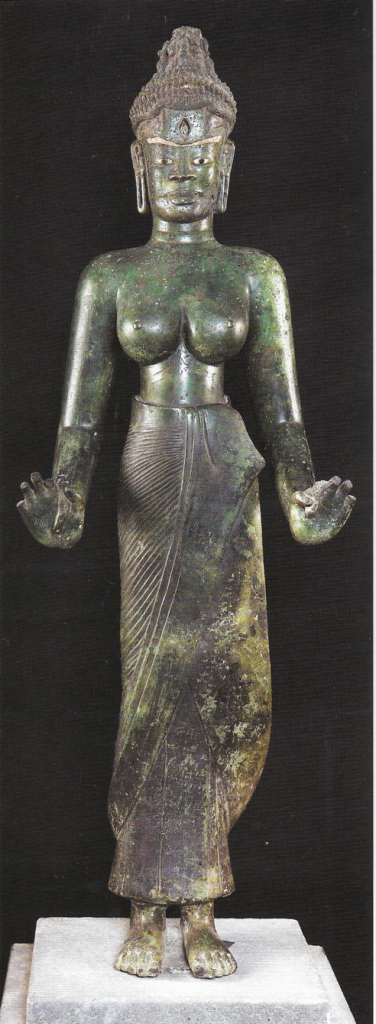
Figure 5. Lakṣmīndra-Avalokiteśvara, 9th century bronze found in the monastery of Đồng Dương. height 6 in. (115 cm). Attributes: lotus (right hand) and conch broken at the time of discovery. BTC 1651-BTĐN 535 Photo: Paisarn Piemmettawat
Other masterpieces include the most famous Mỹ Sơn Śivalinga pedestal (Fig. 6a-b), the only Cham sculpture that records the daily spiritual activities of ascetics performing rituals, practicing meditation, conversing, playing musical instruments, treating diseases, etc., and a widely acknowledge high relief of a Trà Kiệu dancer draped in beads (Fig. 7).

Figure 6a. Mỹ Sơn, 8th century temple pedestal displaying several daily ascetic activities, sandstone, 25 ½ x 107 x 131 in. (65 x 271 x 333 cm). BTC 6-22.4 Photo: Trần Kỳ Phương

Figure 6b. Details of the ascetic activities depicted on the Mỹ Sơn pedestal. Photo: Paisarn Piemmettawat
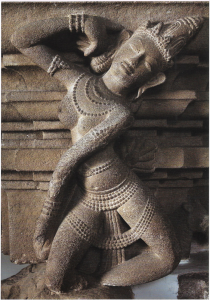
Figure 7. Trà Kiệu dancer/apsaras, Trà Kiệu, Quàng Nam, 11th century, sandstone, 43 x 106 in. (110 x 270 cm). BTC 118/1-22.5
Vibrancy in Stone brings together some of the most priceless and rare works of Cham art. As such, it proclaims the value and artistry of works by the Cham people whose heirs today are an ethnic minority in Vietnam. Equally important, it gathers together these beautiful and rare works of art as a resource for scholars, students, and connoisseurs alike.
News from the Art and Academic Worlds
posted by CAA — August 28, 2019
Want articles like these in your inbox? Sign up:
A New Definition of “Museum” Sparks International Debate
The International Council of Museums’s proposed definition—which incorporates mention of “human dignity and social justice”—has stirred debate among the consortium’s 40,000 professionals. (Hyperallergic)
Don’t Stress the New Semester
If you’re scrambling to create a syllabus, find useful readings, and develop effective assignments, remember you don’t have to recreate the wheel. Here’s a great round up of resources from AHTR. (Art History Teaching Resources)
The Met Is Investigating Objects in Its Collection With Ties to Disgraced Dealer Subhash Kapoor. Will Other Museums Follow Suit?
Kapoor was arrested in 2011 for allegedly operating one of the largest antiquities smuggling operations in the world. (artnet News)
Sexism in the Academy
While there were significant gains during much of the 20th century, feminist progress in the academy has slowed—and may have already come to a halt. (n+1)
News from the Art and Academic Worlds
posted by CAA — August 21, 2019
Want articles like these in your inbox? Sign up:
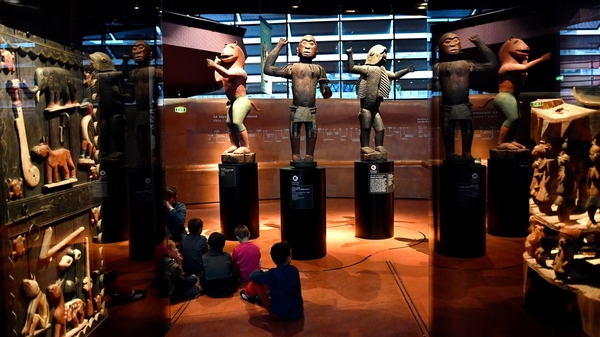
Statues from the Kingdom of Dahomey, in present-day Benin, are pictured in 2018 at the Quai Branly Museum in Paris. Photo: Gerard Julien/AFP/Getty Images
Across Europe, Museums Rethink What To Do With Their African Art Collections
According to commonly cited figures from a 2007 UNESCO forum, 90% to 95% of sub-Saharan cultural artifacts are housed outside Africa. (NPR)
San Francisco School Board Reverses Course, Decides to Save Controversial Mural
Facing international outcry, the San Francisco school board reversed course last week, voting to obscure murals by Victor Arnautoff rather than paint over them. (San Francisco Chronicle)
National Endowment for the Humanities Announces New Grants
The NEH announced $29 million in awards for 215 humanities projects across the country.(New York Times)
Princeton Art Museum Partners with Historically Black Colleges in Art Leadership Program
A new partnership aims to open up career paths for students underrepresented in the field of cultural heritage. (Princeton News)
Decolonizing Your Syllabus? You Might Have Missed Some Steps
“Inviting voices into spaces not built for them or that undermine their messages, lived experiences, and expertise can often work against the well-intentioned goals of inclusion.”(Twitter thread)
New in caa.reviews
posted by CAA — August 16, 2019
Allison Young reviews Grasping Shadows: The Dark Side of Literature, Painting, Photography, and Film by William Chapman Sharpe. Read the full review at caa.reviews.
Talia Shabtay discusses Trevor Paglen: Sites Unseen, a Smithsonian American Art Museum exhibition. Read the full review at caa.reviews.
Daniel Tovar covers the exhibition and catalog William Blake and the Age of Aquarius. Read the full review at caa.reviews.
News from the Art and Academic Worlds
posted by CAA — August 14, 2019
Want articles like these in your inbox? Sign up: collegeart.org/newsletter
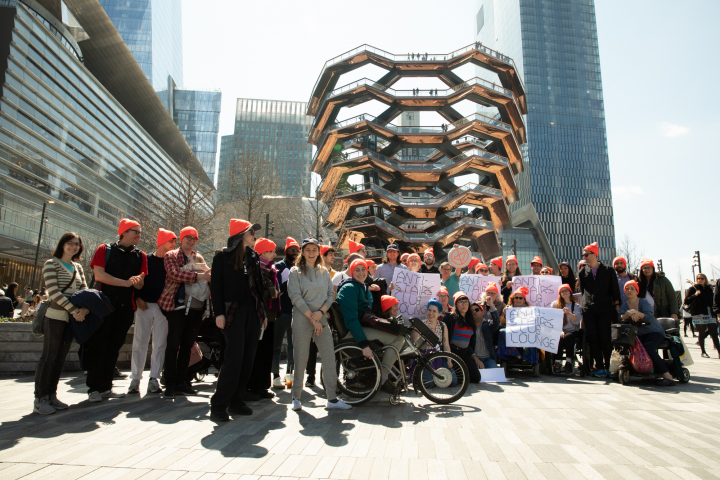
Shannon Finnegan’s Anti-Stairs Club Lounge in front of public monument Vessel in New York. Photo: Maria Baranova, courtesy of Shannon Finnegan via Hyperallergic
Fighting the Art World’s Ableism
A call for arts institutions to move beyond ADA compliance and develop greater awareness around accessibility. (Hyperallergic)
After Damaging Collisions (and Too Many Near Misses), Venice Decides to Ban Giant Cruise Ships Once and For All
The Italian government has decided to begin diverting the giant ships away from Venice’s central waterway. (artnet News)
Ranking New York’s Most Toxic Museum Boards
Following the resignation of Warren Kanders from the Whitney Museum board, a look at the makeup of other prominent New York institutions. (New York Magazine)
Sourdough Enthusiasts Are Harvesting 4,500-Year-Old Yeast From Museums’ Egyptian Pottery to Make Bread Fit for the Pharaohs
What happens when a scientist, an Egyptologist, and a video-game designer walk into a museum? (artnet News)
New in caa.reviews
posted by CAA — August 09, 2019
Matthew Bird discusses Childhood by Design: Toys and the Material Culture of Childhood, 1700–Present, edited by Megan Brandow-Faller. Read the full review at caa.reviews.
Brett M. Van Hoesen considers Trevor Paglen’s Orbital Reflector, on view at Nevada Museum of Art, Reno. Read the full review at caa.reviews.
Adrienne Rooney reviews the exhibition catalogue Relational Undercurrents: Contemporary Art of the Caribbean Archipelago, edited by Tatiana Flores and Michelle Ann Stephens. Read the full review at caa.reviews.
Announcing New CAA Professional Committees
posted by CAA — August 08, 2019
CAA is pleased to announce the creation of two new professional committees: a Committee on Research and Scholarship, and a Services to Historians of Visual Arts Committee. The new committees were approved by the Board of Directors at their May 2019 meeting. Concurrent with our annual call for new committee members, we seek applicants to form the inaugural teams for these two new committees.
The deadline for these applications is October 1, 2019, for new committee service to begin at the Annual Conference in February 2020.

Discussion group at 2018 CAA Annual Conference. Photo: Rafael Cardenas
The formation of these new committees responds to requests from our membership and to a desire to be forward-looking in addressing the professional needs of our fields.
The Committee on Research and Scholarship will offer a resource to all members engaged in the production or consumption of scholarly research.
The Services to Historians of Visual Arts Committee will identify and address concerns facing the historian members of our organization (encompassing specialists in any facets of art, architecture, design, material culture, and visual culture).
The Services to Historians of Visual Arts Committee is intended to recognize our organization’s enduring support for historians, offering them a presence and a voice similar to the role played by other profession-specific committees in our organization (such as the Services to Artists Committee and the Committee on Design). As noted in the committee charge, the Services to Historians of Visual Arts Committee “offers a forum for the discussion of issues of mutual interest across the discipline’s many diverse fields and methodologies. In a climate of great threat to the survival of history of art and history of visual arts programs, this committee provides a locus for advocacy issues particular to historians in these areas of interest.” It is understood that the committee will play an active role in the Annual Conference but is also intended to serve as a central hub and resource for communication among historians of the visual arts well beyond the chronology of conference programming.
As stated in the committee charge, the Committee on Research and Scholarship is charged with “gathering information, [and] assessing and proposing organizational advocacy for CAA on matters concerning the research and scholarship in visual arts and design, encompassing all facets of research regarding history, theory, education and practice.” Specialists in the visual arts—whether practitioners or historians—face unique challenges in the production of their scholarship, such as the cost of image permissions, the closures or reorganization of academic presses, and/or the misalignment of the multiyear workflow of exhibitions or excavations against the strictures of a tenure clock. A scholar’s type of institutional affiliation, or independent scholar status, has an enduring impact on the types of research and scholarship that can be produced—arguably in more profound ways than in other humanities or arts fields. The Committee on Research and Scholarship will provide a vital hub to our members interested in addressing any of these areas of concern—or advancing other concerns or questions concerning the area of research and scholarship.
If you wish to apply for either of these new committees, send an email to Vanessa Jalet at vjalet@collegeart.org with a brief statement of interest and attach a reduced résumé (no more than 2-3 pages).
Kindly also enter in the subject line: “Applicant for Committee on Research and Scholarship” or “Applicant for Services to Historians of Visual Arts Committee”
Deadline: October 1, 2019
Committee on Research and Scholarship Charge
The Committee on Research and Scholarship is charged with gathering information, assessing trends, and proposing organizational advocacy for CAA on matters concerning the advancement of research and scholarship in visual arts and design, encompassing all facets of research regarding history, education, and practice. Recognizing that professionals must navigate a rapidly-transforming field of options for conducting research and disseminating the results thereof, the committee is responsible for assisting the organization in engaging with current issues and serving its membership in this important facet of their professional life.
Services to Historians of Visual Arts Committee Charge
The Services to Historians of Visual Arts Committee identifies and addresses concerns facing historians of art, architecture, design, material culture, and visual culture. It creates and implements programs and events at the conference and beyond. It offers a forum for the discussion of issues of mutual interest across the discipline’s many diverse fields and methodologies. In a climate of great threat to the survival of history of art and history of visual arts programs, this committee provides a locus for advocacy issues particular to historians in these areas of interest. The Committee lends support and mentorship for both seasoned and emerging professionals. It is also charged with maintaining dialogue with other professional organizations and affiliated societies focused on the history of art, architecture, design, material culture and visual culture.
News from the Art and Academic Worlds
posted by CAA — August 07, 2019
Want articles like these in your inbox? Sign up: collegeart.org/newsletter
No Place for Self-Pity, No Room for Fear: Toni Morrison on the Artist’s Task in Troubled Times
Author and professor Toni Morrison passed away this week at the age of 88. Read her 2015 essay on the role of the artist, “No Place for Self-Pity, No Room for Fear.” (The Nation)
In a Powerful Statement, the Baltimore Museum of Art Is Dedicating All of Its 2020 Programming to Female Artists
The museum is planning thirteen solo shows for artists including Joan Mitchell, Candice Breitz, and Katharina Grosse. (artnet News)
Congress Is Investigating the Rapid Closure of Art Institutes Across United States
The collapse of the university franchise that owned more than 40 college campuses across the country has left nearly 26,000 students with ample debt and no degrees.(Hyperallergic)
Becoming Full Professor While Black
“My promotion happened—like those of all the black women before me—not because times have changed, but because I beat the odds.” (Chronicle of Higher Ed)
New in caa.reviews
posted by CAA — August 02, 2019
Volker Schier reviews Liturgical Life and Latin Learning at Paradies bei Soest, 1300–1425: Inscription and Illumination in the Choir Books of a North German Dominican Convent by Jeffrey F. Hamburger et al. Read the full review at caa.reviews.
Debra Pincus writes about the exhibition Mantegna and Bellini and its accompanying catalogue. Read the full review at caa.reviews.
João Florêncio discusses Lyndon K. Gill’s Erotic Islands: Art and Activism in the Queer Caribbean. Read the full review at caa.reviews.
Sunanda K. Sanyal explores the use of virtual reality in Laurie Anderson, currently on view at Mass MoCA. Read the full review at caa.reviews.



